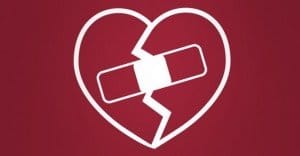8 Effective Attention Grabbers to Reduce Bounce Rate

Bounce rate is caused by one of two things. Either the user was searching for something completely different and didn’t find anything relevant on your page, or the user wasn’t hooked by your content and left. The first might indicate an issue with keywords, but it’s not that dangerous. The second is a problem that, when fixed, can massively increase the efficiency of your site. What can you include to make sure your posts have the maximum possible hook?
1. Something New and Interesting
It’s a fact that the human brain requires the unknown. If you’re surrounded by the familiar every day, you’re going to grow bored, lose your attention span and otherwise find yourself unable to concentrate. Your web readers don’t just want to avoid boredom; they need to.
How does novelty, interest and attraction come about on a website? You have a number of options. You can use large, bold images. You can use creative formatting. You can create an innovative layout. You can use scripting, HTML5 and such to create a dynamic page. Even just changing the tint of the background and adding an image to a post can make it many times more interesting.
There are benefits to consistency throughout a website, but there are just as many benefits to novelty. You shouldn’t go out and change up the layout of every page, but you should at least focus on making each page as interesting as possible just to look at, even without reading the content.
2. A Visible Contrast
When you think of contrast in advertising, one of the most obvious examples is the fitness world. Check out the top ad on this page, for example. It’s a bold, vibrant image showing the contrast between an obese body and a fit body. A more basic image, such as the general before and after comparison picture, is more common. This is the idea of a visible contrast.
In any part of marketing, the contrast is important, you just might not realize it. However, it’s easy to put into practice whenever you’re selling a product or service. Come up with a problem that’s solved by the product. Create a comparison; the before and after using the product. It can be as physically obvious as an exercise machine, or it can be as subtle as an increased conversion rate from using marketing software.
To use this on your site, appeal to contrast. Hook the reader by showing them the before and after, the visible effects – even in the form of numbers and some creative typography – of your content, product or service.
3. An Emotional Appeal
Emotion comes in many forms. You can appeal to sorrow, such as the famous song no one wants to listen to. You can appeal to fondness or parenthood. You can appeal to lust. You can appeal to anger and outrage. Emotion causes an immediate burst of attention and it makes your readers investigate more immediately. More importantly, that emotion lingers; they’ll remember your advertising later on down the road.
Of course, putting emotional appeals into blog posts regularly is a difficult task. You can’t focus on the negatives without driving users away. You can’t focus on sex appeal without earning a NSFW label. What you can do is include low-key emotional images in every piece you write. Images tell stories; use yours to accompany your blog posts.
4. A Logical Sequence
The concept of multitasking is something of a myth. While you can successfully manage doing several things at once, most of the time that means quickly alternating from one to the other without losing your overall grasp of both. At any given moment, you’re focused on one thing – even if that one thing is “maintaining an overall grasp of several ongoing projects.”
What’s the point? The point is that human beings like to proceed through things logically. This means you need to present your content in a logical order. Start with a premise; a conclusion you hope to draw, a value proposition you hope to prove. Proceed from there to setting up the premise, presenting the evidence, drawing conclusions and driving them home. A logical progression through facts and consequences used to drive your point home.
5. Relevance and Entertainment
If you keep someone interested and entertained, they can have an infinite attention span. The typical attention span of a web user is what, two minutes? Just check your analytics for average time spent on site. Yet that’s not the average person’s attention span. After all, if we all gave up everything after two minutes, we’d never finish meals and the television and movie industries wouldn’t exist.
If you entertain your readers, or if you hook them with content relevant to their interests – something they find worth the time and effort of reading – they’ll stick around. If you write well enough, a 100,000-word blog post would be easy as pie to market. If you don’t, they’ll never read past the introductory paragraph.
6. Formatting or Scanning
If you’ve ever looked into eye tracking studies, particularly for the web, you may have learned that readers don’t actually read your blog posts. They skim your site in an F-shaped pattern. They read a headline, forming the top bar of the F. They scan down the left side, forming the vertical. They scan across points that stick out or paragraphs that look interesting, forming crossbars.
Take advantage of this. Use bulleted lists and short sentences to encourage skimming. Don’t write long, overly complex statements. If a reader can’t parse it in one pass, they won’t try for a second. Bold key points. Use subheadings. Format your posts to make them as easy as possible to skim.
7. Visible, Concrete Evidence
You need to support your points with evidence to make a compelling blog post. This also gives you the advantage of a diverse incoming and outgoing link profile, when you’re linking to authority sites for support.
On the web, you’re not limited to blocks of text and boring statistics. Compile those statistics into charts and graphs. Compile those graphs into an infographic. Use bright colors and slick designs to present your evidence in a graphical way that draw the eye.
8. A Fast Site
Okay, so having a fast site isn’t going to grab your reader’s attention on its own. Instead, it will help diminish the chances of a reader losing attention. They click a link to your page and it’s there, ready to read, instantly; they’re going to begin. If they have to wait more than a second, they’ll sense the delay. If they have to wait more than three or four seconds, they’ll go do something else while they wait and forget your site was even open.
Of course, you already do this; site speed is a minor boost to SEO, after all.
 ContentPowered.com
ContentPowered.com







